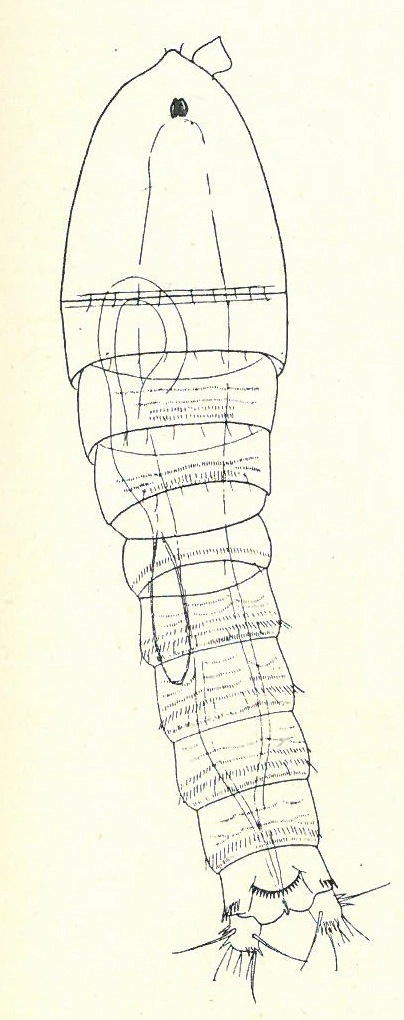Bryocamptus echinatus
Bryocamptus echinatus is a rare species, known from a restricted number of localities in Eastern and Northern Norway. The species is found in various types of freshwaters.
Key characteristics
Bryocamptus echinatus has a rather robust body. The dorsal surface of its somites has a transverse row with a set of numerous small spinules. The exopod in the first four legs has three segments, the same as the endopod of its first leg, while in legs 2–4 the endopod is 2-segmented. The last segment of exopod in the legs 2–4 is elongated. In the first leg, the endopod is longer than the exopod, but for the legs 2–4, the endopod is shorter than the exopod. Its rostrum short. The operculum has a number of fine denticles (11–17), while the caudal ramus is longer than wide. The antennule consists of eight segments.
Female: Length 0.55–0.62 mm
Male: Length 0.50–0.57 mm
Ecology and distribution
Bryocamptus echinatus is a rare species, known from a few localities in Eastern and Northern Norway. The species is found in various types of freshwaters – lakes, streams, caves and groundwater outlets. It has a Palearctic and Middle Eastern (Iran) distribution. It is a cold stenotherm species, which can be found in the profundal zone of lakes, benthic zone of rivers and in brooks, streams, springs, karsts, mosses, subterranean waters and in man-made habitats like city water pipes.
